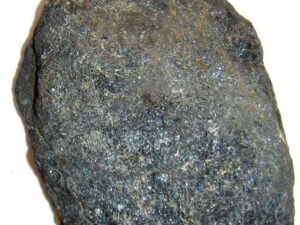Description
Phosphate Bonded Castables: A Versatile Solution for Demanding Refractory Applications
In the world of refractory materials, where high temperatures and aggressive environments reign supreme, the choice of a suitable castable is crucial for ensuring the longevity and performance of industrial processes. Among the various types available, phosphate bonded castables stand out as a versatile and often superior choice, particularly in applications demanding high strength, superior abrasion resistance, and resistance to certain chemical attacks.
What are Phosphate Bonded Castables?
Phosphate bonded castables are refractory materials that utilize phosphate compounds, rather than traditional hydraulic cements, as their primary binder. Typically, these castables consist of a refractory aggregate (such as alumina, silica, or chromia), a phosphate binder (such as monoaluminum phosphate or phosphoric acid), and various additives to control workability and setting time. The unique bonding mechanism offered by phosphates allows for the development of exceptional properties, making them a preferred option in specific scenarios.
The Secret’s in the Bonding:
The key difference lies in the bonding mechanism. In traditional cement-bonded castables, hydration reactions occur with water to form binding phases that hold the aggregate together. Phosphate bonding, on the other hand, involves a chemical reaction between the phosphate binder and the fine refractory particles. This reaction, accelerated by heat during the initial curing stages, results in the formation of a strong, glassy phosphate bond. This bond is characterized by:
- High Cold Crushing Strength: Phosphate bonds contribute to significantly higher cold crushing strength compared to cement-bonded castables, enabling them to withstand mechanical stress even before reaching operating temperatures.
- Excellent Abrasion Resistance: The strong, glassy nature of the phosphate bond provides exceptional resistance to abrasion and erosion, making them ideal for applications involving high-velocity gases or particulate matter.
- Low Alkali Content: Unlike cement-bonded castables, phosphate bonded options are virtually alkali-free. This is extremely important in processes where alkali attack can degrade the refractory lining.
- Improved Chemical Resistance: Phosphate bonded castables often exhibit better resistance to certain chemical attacks, especially by acidic substances, compared to their cement-bonded counterparts.
Advantages of Phosphate Bonded Castables:
The distinctive bonding characteristics translate into a range of advantages:
- Enhanced Strength and Durability: The superior strength and abrasion resistance lead to longer service life and reduced maintenance costs.
- Resistance to Thermal Shock: While not always the primary strength, phosphate bonded castables can be formulated to offer reasonable resistance to thermal shock, depending on the aggregate used.
- Suitable for High-Temperature Applications: Many phosphate bonded castables can withstand temperatures exceeding 1700°C, making them suitable for demanding high-temperature processes.
- Good Adhesion to Metals: The chemical reactivity of the phosphate binder enables better adhesion to metallic surfaces, making them suitable for applications involving contact with metals.
Applications Across Industries:
The unique properties of phosphate bonded castables make them a valuable material in a wide variety of industries, including:
- Steel Industry: Used in ladles, tundishes, and electric arc furnaces (EAFs) due to their resistance to slag attack and mechanical abrasion.
- Cement Industry: Employed in kiln linings, preheaters, and coolers where resistance to alkali attack and high temperatures is essential.
- Petrochemical Industry: Used in reactors, reformers, and incinerators due to their resistance to chemical attack and high temperatures.
- Non-Ferrous Metals Industry: Utilized in furnaces for smelting and refining non-ferrous metals due to their resistance to slag attack and abrasion.
- Power Generation: Applied in boilers, incinerators, and other high-temperature equipment.
Considerations for Selection and Application:
While offering significant advantages, phosphate bonded castables require careful consideration during selection and application:
- Proper Mixing and Placement: Following the manufacturer’s instructions diligently is crucial for achieving optimal properties. Over-watering can negatively impact the bond strength.
- Curing Schedule: A controlled heating schedule is crucial for proper bond formation and to prevent cracking.
- Cost: Phosphate bonded castables tend to be more expensive than conventional cement-bonded options. Therefore, the cost-benefit analysis should be carefully considered, weighing the higher initial cost against the potential for longer service life and reduced downtime.
- Specialized Expertise: Selecting the right type of phosphate bonded castable for a specific application often requires expert knowledge of the process conditions and material properties.
Conclusion:
Phosphate bonded castables represent a significant advancement in refractory technology, offering superior strength, abrasion resistance, and chemical durability compared to traditional cement-bonded options. While requiring careful selection and application, their unique properties make them an invaluable solution for demanding high-temperature applications across a wide range of industries. By understanding the advantages and limitations of these materials, engineers and plant operators can make informed decisions, ensuring the optimal performance and longevity of their refractory linings. As industries continue to push the boundaries of high-temperature processes, phosphate bonded castables will undoubtedly remain a critical component of reliable and efficient operations.










Reviews
There are no reviews yet.